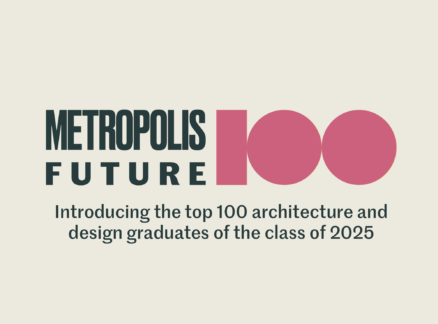August 15, 2014
Ruin Porn
http://www.archdaily.com/537712/beyond-ruin-porn-what-s-behind-our-obsession-with-decay/ Lately, architects are sharing an increasing captivation with ruins. As our technologies for envisioning the buildings of the future become ever-more accurate—enabling us not only to walk through, hover over, and inhabit walls, but also to calculate exact quantities of materials, structural load capacities and costs—our fascination for ruin, a process that is governed […]
http://www.archdaily.com/537712/beyond-ruin-porn-what-s-behind-our-obsession-with-decay/
Lately, architects are sharing an increasing captivation with ruins. As our technologies for envisioning the buildings of the future become ever-more accurate—enabling us not only to walk through, hover over, and inhabit walls, but also to calculate exact quantities of materials, structural load capacities and costs—our fascination for ruin, a process that is governed by laws of nature and time in a manner that is spatially unpredictable and rarely uniform, has also seen a rise in popularity. Blogs such as Ruin Porn, Abandoned America, and Architecture of Doom draw from a recent sub-genre of photography, identified as "ruins photography" or "ruin porn". While buildings can go into decay for many reasons, these images tend to focus on urban decay, especially in cities such as Detroit, Chicago and Berlin, which saw a surge of industrialization in the last century that has since dwindled.
The interest in documenting these abandoned buildings with their crumbling structures and desolate atmospheres has been a subject of much debate recently. Supporters of ruin porn would argue that these buildings promote tourism, sometimes tagged “intellectual disaster tourism,” in cities such as New York and Rio De Janeiro and particularly in Detroit, which has seen a rise in visiting artists. However, some critics of the movement believe that fetishizing these dilapidated buildings hinders their re-development, while others say romanticizing these ruins is too passive an approach in terms of creating awareness and bringing about change. In his article Detroitism, John Patrick Leary writes, “Ruin photography, in particular, has been criticized for its “pornographic” sensationalism… And others roll their eyes at all the positive attention heaped on the young, mostly white “creatives,” which glosses over the city’s deep structural problems and the diversity of ideas to help fix them.” [1] Certainly, photographers such as Julien Mauve, Andrew Moore and William Widmer create captivating works of art. For architects, however, are these not windows into fantasizing not just what once was, but what realistically could be?
The practice of documenting buildings in ruin in various art forms is by no means new: Giovanni Battista Piranesi’s etchings, the follies at English Romantic Period gardens such as Stowe and Stourhead and the travel sketches of Le Corbusier are all testimony to the fact that architects have long been inspired by the process of ruin that every building must eventually face in some form. For Piranesi, the ruins he drew were propaganda for the might of ancient Rome, in addition to serving as travel souvenirs, while for the Romantics, ruins helped establish architecture’s links with nature and natural processes. For 20th century architects such as Le Corbusier and Louis Kahn, on the other hand, studying the great ruins of Egypt, Greece and Rome was a means of understanding the attributes of architecture that stood the test of time, and different approaches to organizing and perceiving space. In light of these movements, it is easy to see Ruin Porn as a continuation of this trajectory to some extent – though at the same time, additional associations tied to Ruin Porn in particular make this recent fascination a more unique, complex issue for architecture.
If as architects, our interest in modern urban ruins is tied to our enhanced technological capabilities in designing buildings, then, it is equally possible that our unprecedented abilities in preservation and restoration play a role in understanding this phenomenon. In the recently published issue of Log 31, co-guest editor Bryony Roberts writes, “The fields of architecture and preservation have long been separate if not antagonistic, but more recent practices begin to fuse the two as preservation is acknowledged as an act of design… The convergence of design and preservation opens up a new territory of architectural experimentation, in which we are designing the past and present simultaneously.” [2] Projects like David Chipperfield’s Neues Museum show the level of sensitivity that contemporary design can be bring to such restorations, combining a respect for the original fabric of the building with the confidence to usher it beyond a ruin, into the realm of contemporary architecture. Similarly the renovation of the Park Avenue Armory by Herzog and de Meuron shows how today’s most advanced technologies can be employed to deliver nuanced, informed restorations at even the most minute detail, to preserve layers of architectural history in a building.
Our fascination with Ruin Porn is far too complex a phenomenon to be dismissed as being a morbid obsession with decay and desolation. The didactic display of where our society has failed in the last century is embodied in ruin porn, and is perhaps one further source of uneasiness for architects. On the other hand, there is the discomfort caused by the fact that we are so intrigued by that which is not architecture, and that which signifies what is beyond our abilities, not unlike a doctor marveling at a corpse. In the past, architecture’s obsession with ruin has been a meditation on natural processes and a study on spatial forms. Ruin Porn, while containing elements that trace these past interests, also carries a perversity that makes it unique to our time. The relatively recent downfall of buildings like Detroit’s Eastown Theatre, when compared with the Great Pyramids or the Colosseum of Rome, enable these structures to straddle decay and preservation with tantalizing ease. We can see these ruins as icons of failed industrial socio-economic organizations, monuments to a bygone era of our urban history, but simultaneously, they present tempting opportunities for preservation, restoration and urban renewal strategies. Certainly, the success of projects like the High Line in New York and the Tate Modern in London, make these fantasies all the more enticing.
Just as the real impact of Piranesi’s etchings would only become evident in retrospect, we will only really be able to assess the nature of the relationship between ruin porn and the increasing attention paid to preservation, after these two movements are well on their way. Sadly, it is this very ambiguity that inhibits the influence each movement is able to exert on the other.





